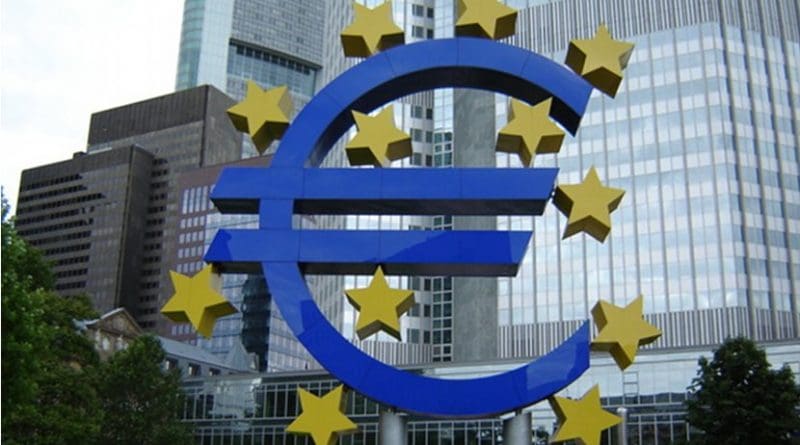ECB Ponders Further Monetary Stimulus To Counter Trade, Brexit Risks
By EurActiv
By Jorge Valero
(EurActiv) — The European Central Bank decided on Thursday (6 June) to keep the low interest rates unchanged at least until mid-2020, and confirmed that it is considering further monetary stimulus, including further rate cuts and restarting the asset purchasing programme, to counter the trade tensions and Brexit uncertainty.
“The Governing Council is determined to act in case of adverse contingencies,” ECB President Mario Draghi said after the meeting.
Responding to questions, Draghi admitted that the discussion about the readiness to act, also included in past ECB statements, was “more granular” on this occasion.
He told reporters that “several members” of the Governing Council, which includes the 19 governors of the eurozone central banks and the six members of the Executive Board, defended the possibility of rate cuts for the deposit facility.
Others proposed restarting the asset purchasing programme, finalised last December, while other members defended further monetary policy guidance, beyond the mid-2020 scenario.
As part of its monetary decisions, the ECB also announced the terms of a fresh round of auctions of cheap central bank cash (TLTRO III).
Risks
The governing council discussion focused on three interrelated topics: the confidence in the baseline economic scenario of continuous growth, but with prolonged uncertainties, and the readiness to act in case of adverse contingencies.
Draghi explained that back in March, “we may have hoped for a different evolution” in regards to two of the key risk factors: the trade war and the UK’s withdrawal from the EU.
But now these risks “have gained importance and projection”, Draghi said and expressed his concern about the “vulnerability” of some emerging markets.
Against the backdrop of this uncertainty, the ECB decided to keep its low interest rates unchanged, at least during the first half of next year, but said it stands ready to adopt further monetary stimulus.
Draghi argued that there is still “policy space” for further rate cuts and hinted that those who have doubts about additional monetary easing already intervened in today’s governing council discussion.
However, he explained that the ECB’s top body did not asses the contingency measures that may be needed to mitigate the consequences of further rate cuts or new assets purchases.
Weaker growth
The ECB’s willingness to act came as the incoming economic data and survey information “point to somewhat weaker growth in the second and third quarters of this year”, Draghi said.
The trade tensions and prolonged global uncertainties weighted in particular on the eurozone manufacturing sector, the ECB said.
But the continuous improvement of the labour market, with record levels of employment in the euro area, the favourable financing conditions, and the slight expansionary eurozone fiscal stance continued to support the growth in the region.
As a result, the economic horizon was mixed. The ECB improved by 0.1% its GDP forecast for this year to 1.2%, compared with March projections, but cut the growth rate by 0.2% for next year to 1.4%, and by 0.1% to 1.4% for 2021.
Draghi said the conditions were not comparable with those seven years ago, when he said he would do “whatever it takes” to save the common currency in the worst moment of the euro crisis.
He referred to the current growth expansion in the euro area (1.2% this year) and low unemployment level (7.6% in April). Although inflation remains well below the 2% target (1.2% in May), he said there was “no probability” of deflation at this stage.

